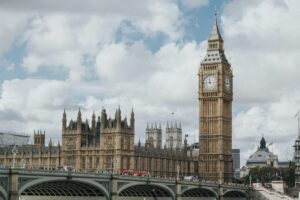- Net mortgage approvals for house purchases increased from 49,000 in April to 50,500 in May, while approvals for remortgaging saw a rise from 32,500 to 33,600 during the same period. Individuals repaid, on net, £0.1 billion of mortgage debt in May. This followed the record £1.5 billion net repayments in April (if the period since the onset of the Covid-19 pandemic is excluded).
- Net borrowing on consumer credit by individuals decreased from £1.5 billion in April to £1.1 billion in May. In May, households on net withdrew £4.6 billion from banks and building societies, compared to net deposits of £3.7 billion in April. This was the highest level of household withdrawals on record (for this monthly series starting in October 1997).
Alice Haine, Personal Finance Analyst at Bestinvest, the DIY investment platform and coaching service, comments:
“Soaring mortgage costs failed to dampen mortgage approvals in May, despite affordability challenges making it increasingly hard for buyers to get deals across the line. While mortgage approvals edged up slightly, these figures don’t take into account the Bank of England’s latest interest rate rise.
The situation could deteriorate from here if the turmoil engulfing the mortgage market deepens any further. Hotter-than-expected inflation data in May prompted the central bank to opt for a more aggressive 50-basis point hike last week in a bid to flatten tearaway price rises.
This will cause significant challenges for household budgets as more people emerge from cheap fixed-rate mortgage deals and are forced to absorb significantly higher repayments. The resulting drop in expenditure is expected to tip the economy into recession with some economists expecting a yearlong downturn starting in the fourth quarter of this year, assuming rates peak at 5.75% by November from the current level of 5%.
The worry is that interest rates could peak even higher, a fear driving mortgage rates to fresh highs as lenders frantically reprice products in the face of worsening expectations. The uncertainty could see mortgage activity slow further, as first-time buyers pause buying plans until rates ease slightly or property prices fall and existing homeowners delay upsizing over fears of heftier repayments and not being able to secure the price they want for their home.”
Click here for more analysis on the options mortgage borrowers have now.
Haine added: “It’s not just mortgage costs causing pain for personal budgets, households will also see a sharp rise in the cost of servicing their debts following the latest 50 bps rise in interest rates. This will only heap more pressure on those forced to turn to credit to cover everyday bills.
Borrowing rose by £1.1 billion in May, down from April’s £1.5bn – perhaps reflecting a more cautious approach to debt as households come under increasing pressure. While energy bills will drop from July 1 and food prices are showing signs of easing back, living costs are still alarmingly high so throwing more expensive debt into the mix will only add further strain.
Credit cards used wisely can help those with niggling debt get their situation under control if a borrower signs up for a 0% balance transfer card. The risk, however, is that they build up more debt and end up paying hefty interest charges when the interest-free period expires.
Credit card rates are variable, with providers able to decide when to increase the rate on existing cards. Some lenders link customer interest rates to the BoE’s base rate, which delivers an immediate hit when rates rise, while other borrowers may receive letters in the coming weeks alerting them of rising interest rate charges.
Anyone shopping for a new personal loan or car finance will also find the cost of borrowing significantly higher so think carefully before making any big-ticket purchases in the current climate. Households should focus on paying down expensive unsecured debts rather than building up fresh debts. Cutting expenditure and living within their means will help them build up vital cash reserves to handle any further financial shocks.
The winners in this new era of high interest rates are savers, who can finally enjoy better returns on their nest eggs after more than a decade of dismally low rates. However, with inflation still stubbornly high at 8.7%, even rates as high as 4.3% for easy-access accounts and 6% for fixed rates are still negative in real terms.
Remember, savers are only in a better position if their money is stored in an account with a generous savings rate. High street lenders have come under fire in recent days for failing to pass on interest rate rises to their customers with some accounts still offering rates as low as less than 1%.
Despite better savings rates on the table, households raided their savings pots, withdrawing £4.6 billion from banks and building societies on net, compared to net deposits of £3.7 billion in April – the highest level of household withdrawals on record.
While many may be dipping into savings to meet rising living costs, savers should still shop around for the best deal available to them to ensure their money is working as hard as possible.
Remember, while a high-interest, easy-access savings account can be a great place to hold a rainy-day fund to cover six to 12 months of expenses, any excess savings in addition to that sum need a more tax-efficient approach.
With interest rates so high, large savings pots are now at risk of breaching the Personal Savings Allowance (£1,000 for basic rate taxpayers, £500 for higher rate taxpayers and zero for additional rate taxpayers). Those looking to protect their money from the ravages of tax and sticky inflation could consider depositing up to £20,000 in a tax-efficient Individual Savings Account (ISA) or topping up a workplace or personal pension to benefit from generous Government tax reliefs.”














